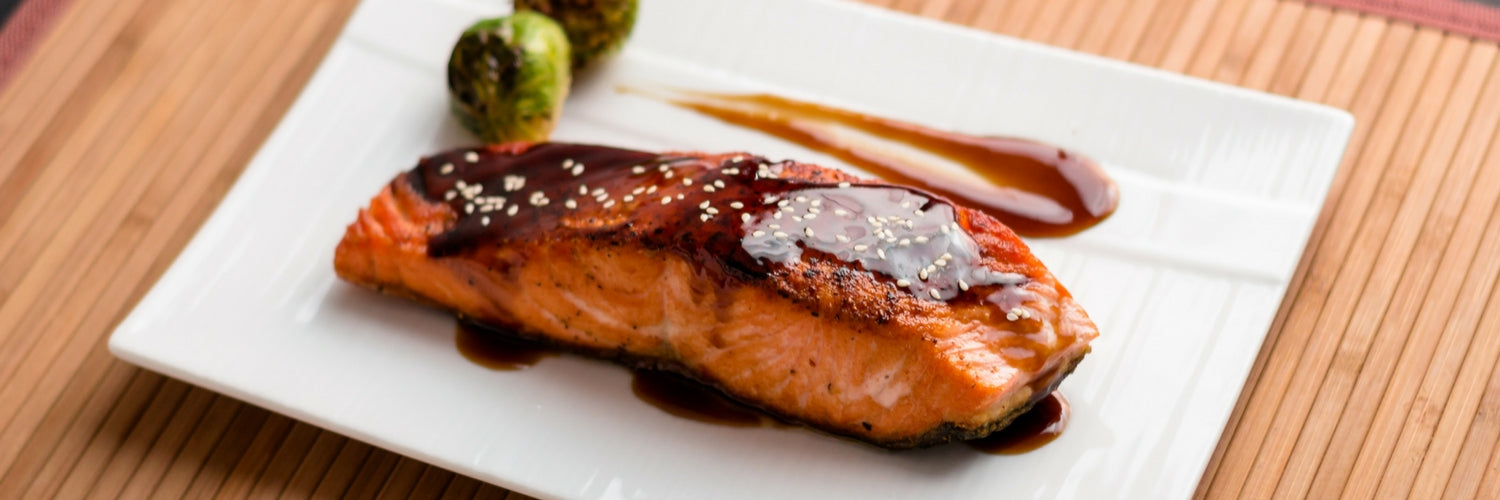
Mirin is an indispensable staple ingredient in any Japanese kitchen, and it should be in yours, too. Here you'll find everything you need to know to incorporate mirin into your everyday cooking.
Mirin often gets relegated to an afterthought in the States. Many home cooks, unless they have a recipe that calls for it, pass over the bottles of the light-amber colored nectar in the supermarket while searching for more common ingredients like soy sauce and rice vinegar. But if you’ve ever had mochi, sushi rice or so-su, the classic Japanese sauce used in everything from stir-fries to braised pork belly, you’ve likely had mirin.
Mirin has no analog in the American pantry, so keep a bottle on hand. Its usage isn’t limited to Japanese food.
Mirin Explained
Mirin is a type of rice wine, similar to sake but with a lower ABV (around 10 to 14 percent as opposed to 18 to 20 percent) and a higher sugar concentration (as much as 45 percent), giving it a consistency similar to light syrup. It has a unique flavor profile, but you could best describe it as a strong, distinct taste of mild sweetness balanced with a touch of pleasant tanginess.
You’ll find three types of mirin in almost any well-stocked international market: hon mirin, mirin-like condiment and mirin-type condiment. You can also find mirin in the supermarket. However, for the best selection and quality, order online or visit a market that offers a wide selection of Asian foods in general.
- Hon mirin has 14 percent ABV and no sodium, making it the best choice for cooking. With no salt, you get better control over the seasoning of the dish. Hon mirin is sometimes referred to as “pure” or “real” mirin. It consists of cultured rice, glutinous rice and distilled alcohol, and undergoes about two months of fermentation.
- Mirin-like condiment has under 1 percent ABV and under 1 percent sodium content. Made of brewed vinegar, rice-brewed seasoning, starch syrup and various acidic elements, mirin-like condiment echoes the taste and consistency of hon mirin, but the quality just isn’t there. However, the differences between hon mirin and mirin-like condiment aren’t quite as noticeable in a dish, as the taste melds with other ingredients. If you can’t find hon mirin, mirin-like condiment is your next best choice.
- Mirin-type condiment is comprised of distilled alcohol, rice, starch syrup, water and salt. A far cry from both hon mirin and mirin-like condiment, mirin-type condiment provides merely a faint impression of mirin essence.
Mirin Substitution and Storage
If you need mirin on the fly and don’t have the time to pick up a bottle, you can improvise by mixing four parts sake to one part granulated sugar. Mix the sake and sugar until the sugar dissolves and add it according to your recipe. To make one tablespoon of mirin substitution, mix one tablespoon of sake with one teaspoon of sugar.
Hon mirin, due to its ABV, stores best in a cool, dark place, such as a cupboard or pantry. Store mirin-like condiment and mirin-type condiment in the refrigerator.
How to Use Mirin
Mirin lends itself well to a variety of applications, particularly sauces. Add it to any dish you feel needs a subtle boost of sweet, mild tartness.
- Due to its sugar content, mirin makes an aesthetically pleasing, glossy glaze for meats when combined with an equal amount of apple cider vinegar or fruit juice.
- During the final minutes of cooking a stir fry, add a few dashes of mirin to help tie all the competing flavors together.
- Any dish with soy sauce can handle a dash of mirin; it creates a synergistic, harmonious background flavor.
- A splash of mirin added to soups and stews deepens and enriches the overall flavor profile.
- Add mirin to marinades to give it a boost of umami.
- Use mirin sparingly. Add it to taste unless your recipe calls for a specific amount; you want to complement, not overpower, the other ingredients in a dish. For example, in a traditional four-serving stir fry, use no more than one to one-and-a-half tablespoons, depending on your taste preferences.
- Most of the alcohol in mirin evaporates after about 30 seconds of simmering, so you shouldn’t detect any alcoholic elements in the prepared dish.
Basic Teriyaki Sauce
Perhaps one of the most recognizable Japanese-style sauces, teriyaki, relies on mirin to achieve its iconic taste. Homemade teriyaki sauce takes just a few minutes to make. Without question, it tastes leagues above what you typically find in the supermarket. To make a basic teriyaki sauce on your own, consider adding secondary ingredients such as minced garlic, scallions or toasted sesame seeds. Find out how to make teriyaki sauce here.
